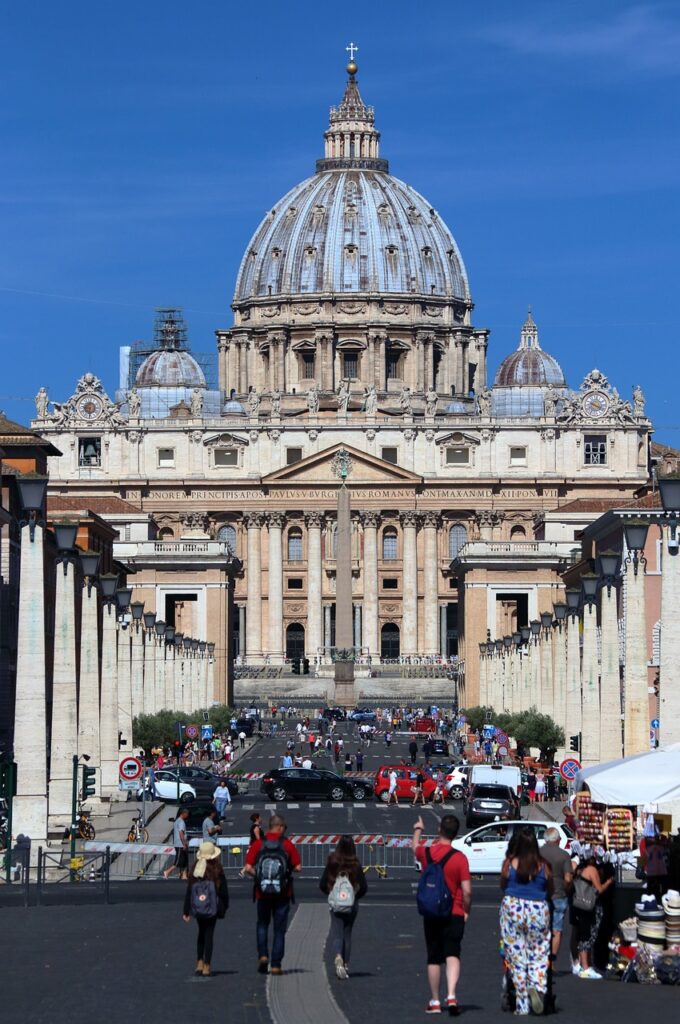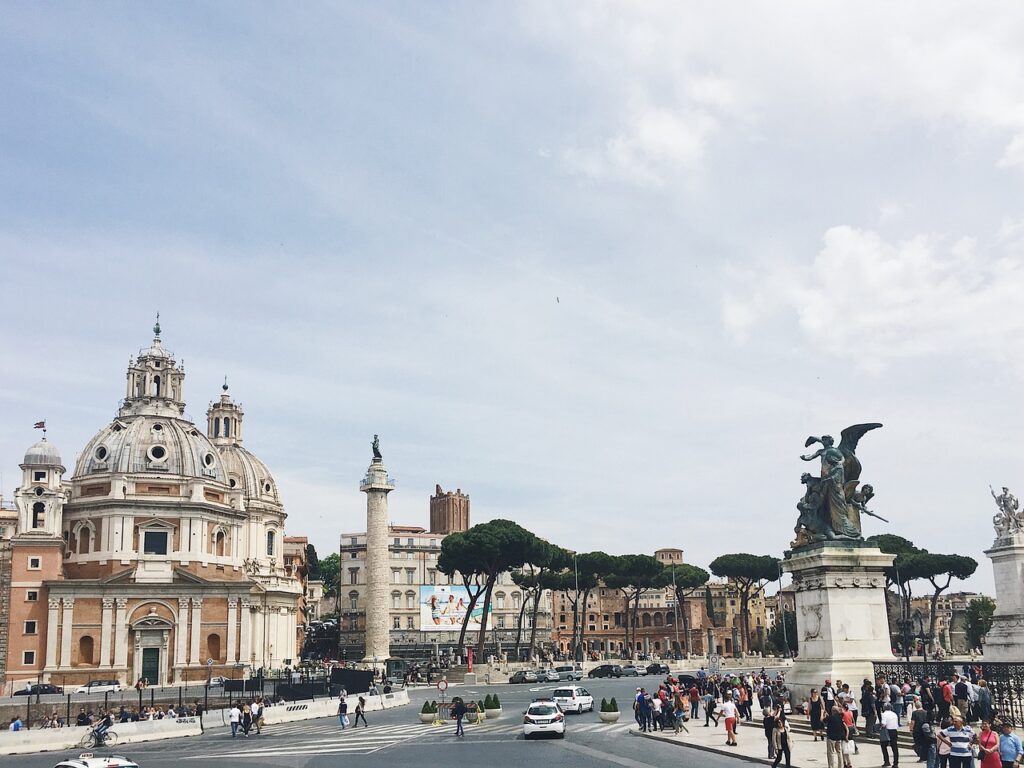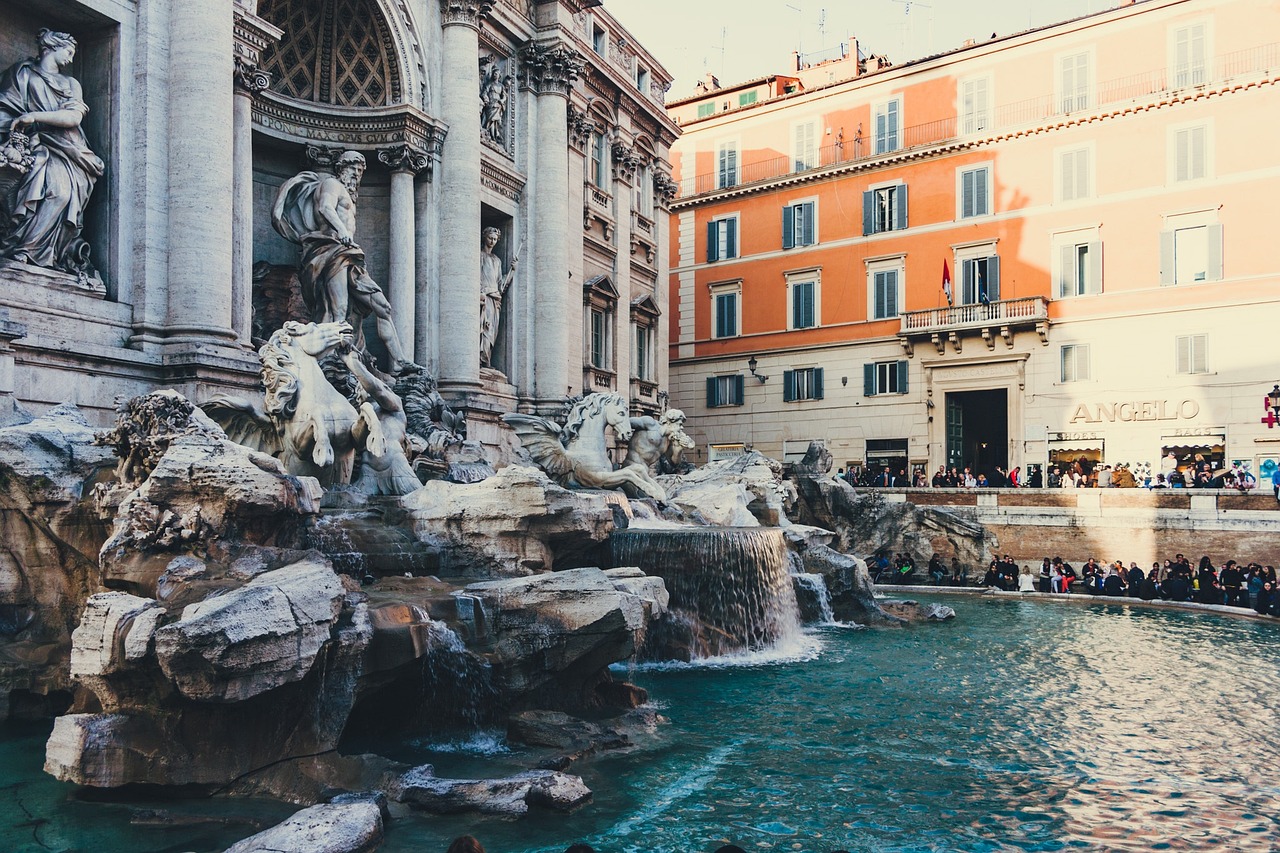Are you ready to savour la dolce vita in Italy’s most majestic, cosmopolitan and iconic city? If all roads lead to Rome, it’s no coincidence that it has become a haven for hundreds of thousands of expatriates. They come to work while exploring the 2000 years of fascinating art and architectural history! At once imperially sophisticated and wholeheartedly authentic, Rome is also an epicurean metropolis where life is simply… good!
For your temporary or long-term stay, here’s a guide to the city that was once the capital of the world.
Why move to Rome?
- An unrivalled wealth of history, culture and architecture. Rome is truly an open-air museum!
- A lifestyle that is both hectic and relaxed. Are you familiar with the saying ‘In Rome, do as the Romans do?’
- A high quality of life for singles, couples and families alike
- A spectacular culinary scene both refined and authentic… there is something for everyone!
- A very cosmopolitan capital.
- Lower cost of living than other European capitals.
- Excellent schools.

Accommodation in Rome
Types of accommodation and rentals
The accommodation available in Rome is mainly comprised of apartments of various types and sizes from monolocale (studio) to quadrilocale (4-room) and even attici (penthouse)), located in apartment blocks. These are either empty, semi-furnished or fully furnished. Forget about renting a place located at ground level, those are reserved for the building’s shops and/or caretakers. In some areas you can find very charming villas of different styles.
In Rome, just like in Milan, rents are relatively high, but as in other European capitals, the further you get from the historic centre and tourist attractions, the lower the prices.
There are two main types of leases in Rome: the 4+4 (four-year lease, renewable once, for four years) and the 3+2 (three-year lease, renewable once, for two years). For semi-furnished or fully furnished properties, the second option is the most common. However, it is possible to find shorter leases (between one and 18 months), but the prices are much higher. Landlords usually ask for three months’ rent as a deposit.
Finding accommodation in Rome?
As the rental market in Rome is under pressure due to high demand compared to limited supply, it is strongly recommended that you start looking as early as possible and act quickly! Before you even visit a place you might like, make sure you have all the documents ready, including your passport, work contract and proof of income. If you like the property, tell the owner or agency as soon as possible to make sure you make your interest known thereby enhancing your chances of success.! The rent is usually non-negotiable.
You can check property classifieds in local newspapers such as Il Messagero, Corriere della Serra and La Repubblica, or browse real estate websites such as immobiliare.it, casa.it, Idealista or Wanted in Rome. Local estate agents can also help you find accommodation. They usually charge a commission equivalent to one month’s rent plus a percentage of the same rent.

What are the best areas to live in?
Rome is divided into fifteen ‘municipalities’ (municipi), which in turn are divided into 35 districts (quartieri). Here are the most popular neighbourhoods to live in as an expat:
Trastevere: This flamboyant bohemian district is popular with expats, especially couples and singles. Located on the right bank of the Tiber, it is one of the oldest districts of the capital. Its cobbled streets are lined with quaint trattorias, pretty craft shops and lively cafes. Travestere: a great way to immerse yourself in the Roman way of life!
De Prati: This elegant, very quiet district, just a stone’s throw from the Vatican, is home to a mix of residential buildings, offices, shops, and restaurants. Expats love its cosmopolitan feel, its peace and quiet and the fact that it has excellent transport links especially to international schools.
Testaccio: Both peaceful and close to the centre, this former working-class district with a history dating back to antiquity has been gentrified over the years but has lost none of its authenticity. A famous hub for Rome’s foodies, Testaccio is renowned for its gourmet market and is popular with expats for its unique blend of modernity and history.
Parioli: On the banks of the Tiber, a stone’s throw from the famous Villa Borghese, this very chic residential area is one of the wealthiest in the capital. Quiet, family-friendly, and elegant, Parioli will appeal to expatriate families in search of tranquility.
Pigneto: To the east of Rome, not far from Termini station, lies Pigneto, a district that was an ill-reputed town until the 1990s but has since become one of the most vibrant and creative areas of the Italian capital. With the feel of an alternative village, Pigneto is the perfect hub for expats who appreciate street art, vintage charm, lively streets, day and night, and the mix between the picturesque and the modern. In Pigneto, you can even find old workers’ housing converted into small villas (villini).
Centro Storico: This is Rome’s heart, home to its millennial treasures – from the Pantheon to the Colosseum. This is the place to be for expats who want to be surrounded by iconic monuments while enjoying lively district of restaurants, shops and cafés.
Aventino: Located in the south of Rome, this residential area, which takes its name from one of the seven Roman hills on which it sits, is appreciated by expats for its elegance and serenity. A true oasis of peace for those seeking tranquility without being too far from the beating heart of Rome.
Working in Rome
Although the job market in Rome is slightly less dynamic than in Milan, the Italian capital is home to the largest expatriate community in the entire peninsula, making expats more competitive in several industries.
Mastering Italian (and one or more other languages): a must if you want to stand out from the crowd
Speaking and writing Italian is undoubtedly a differentiating factor and an added value that can help you stand out from your expat competitors. And even if you’re planning to work for an international company, being fluent in Italian will make it easier for you to deal with your business contacts and administrative procedures.
In what sectors?
- Tourism: The Italian capital is a very popular tourist destination, with its magnificent historical and cultural heritage. It’s easy to find a job in this sector, especially in restaurants, hotels, museums and as a tourist guide.
- Luxury goods: Rome is home to many luxury brands which are particularly looking for salespeople with multilingual profiles. English, French, Chinese, Russian and Arabic are all in demand.
- Finance and banking
- International cooperation: Rome is home to several European and UN international institutions: Food and Agriculture Organisation, FAO; World Food Programme. WFP; and International Fund for Agricultural Development, IFAD,, as well as embassies and consulates.
- Technology, information, and innovation: Rome is home to many start-ups in these sectors.
- Aerospace and Defence: Leonardo (one of the main international aerospace groups) and Thales Alenia Space (satellite manufacturer) are based in the Italian capital and are looking for high-skilled technical profiles.
To keep in mind:
- English is less widely spoken in the workplace in Rome than in Milan.
- Conviviality and human relations are central to the workplace in Rome.
- Flexibility is valued more than punctuality.
- Dress code plays an important role in the workplace and in everyday life.
- Don’t sign a contract without first obtaining a residence permit!
Useful links for finding a job in Rome:
InfoJob
Trovalavoro
Cliccalavoro
Lavoro Turismo (secteur du tourisme)
ReteInformaticalavoro (secteur informatique)

Daily life in Rome
The cost of living
Although living in Rome is relatively expensive, the cost of living is lower than in other European capitals such as London or Paris, or in other Italian cities such as Milan or Venice. When it comes to food (shopping and restaurants), there really is something for everyone, but accommodation is the biggest expense, regardless of the area. A three-room apartment in Rome, for example, costs between €1,230 and €2,100. Utilities (gas, electricity, water, etc.) average €204 for an 85m2 apartment, and international school fees range from €8,000 to €30,000 per year.
Getting around the city
Many Romans use their cars to get to and from work, as it is a safe and comfortable means of transport. However, as traffic is very heavy, especially at rush hour, and parking is limited, it’s probably wiser to opt for public transport or a scooter (viva la Vespa!).
There are three metro lines: line A, which runs from Battistini to Anagnina, passing through the tourist areas of the historic centre; line B, the oldest line, which runs from Laurentina to Rebibbia (passing through the Colosseum); and line C, which currently runs from Monte Compatri-Pantano to San Giovanni (this line is the most recent and is currently being extended). The three lines serve 74 stations.
There are also a number of tram and bus lines and the city’s suburban train network (Servizi ferroviari suburbani di Roma) serves for getting within and around the city.
Living in Rome with your family
Rome is a very family-friendly city and Romans, like Italians in general, attach great importance to children and family life.
Childcare options:
There are several childcare options for children aged 0-3:
- Rome’s public nurseries (Nidi di Roma), which are subsidised by the city council, and cater for children aged between three months and three years. It is advisable to enrol early as, just like in other large cities, places are very limited! Fees for public daycare depend on the income of the parents.
- Private Italian, bilingual or international nurseries offer greater flexibility in terms of schedule, enrolment procedures and teaching methods. Private daycare’ fees which are generally higher than public ones.
- Company crèches (asilo nido aziendale) for children aged between 3 and 36 months.
- Spazio Be Bi : an educational and recreational service for children aged between 18 and 36 months, for a maximum of five hours a day..
- Private nannies offer more flexibility than collective childcare facilities.
School options
Rome has no less than 3,465 public and private schools.
If you want to enrol your children in the Italian state education system, it’s totally possible. The Italian government has created Unica, a unique platform designed to give you all the information and tools you need to understand how Italian schools work.
Most expats choose, however, to enrol their children in one of the many private international schools in the Italian capital. St George’s British International School (British curriculum); American Overseas School of Rome (American curriculum; International Baccalaureate) and Lycée Chateaubriand de Rome (French curriculum) are popular among expats.
While Italian state schools are free for children up to the age of 16, private international schools are tuition-based and often expensive. Fees can reach €30,000 a year for some.
Healthcare in Rome
The healthcare system
Expatriates living in Italy for more than three months are required to register with the Servizio Sanitario Nazionale (SSN), Italy’s national health service, through the regional health authority in their province of residence (in this case, ASL ROMA). The SSN guarantees expats and all residents basic health care.
It is strongly recommended that, in addition to this compulsory health insurance, you take out private international health insurance for Italy, which offers more comprehensive and flexible cover and better reimbursement for medical services and drugs.
The best healthcare facilities in Rome
Italian hospitals
Policlinico Universitario A. Gemelli (classé parmi les 50 meilleurs hôpitaux du monde)
Azienda Ospedaliera San Giovanni Addolorata
Fondazione Policlinico Tor Vergata
Ospedale San Filippo Neri
Policlinico Umberto I
